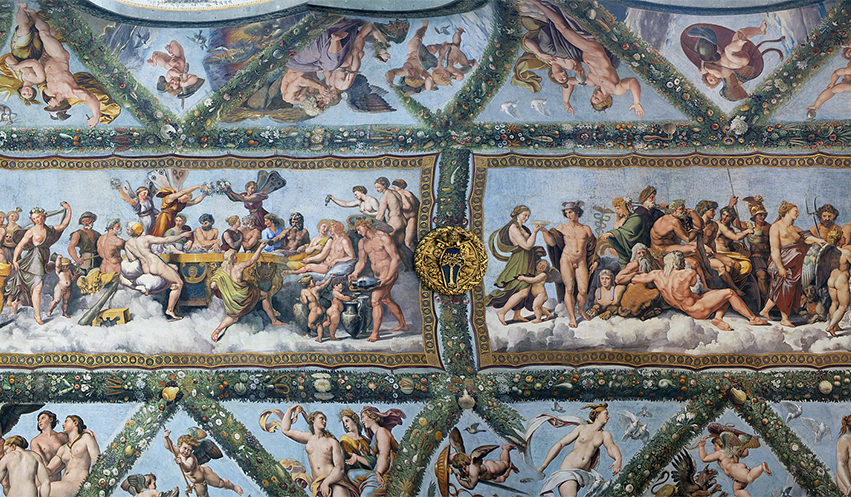Raphael and His Workshop: The “Digital” Loggia of Cupid and Psyche in the Villa Farnesina (Webinar)
This webinar will offer an exciting digital dimension of the history and art of the famous Loggia of Cupid and Psyche in the Villa Farnesina in Rome. The Loggia is named after its vault decoration painted by Raphael and his workshop in 1518. The digital system was developed by researchers Eliana Siotto and Gianpaolo Palma (Institute of Information Sciences and Technologies, CNR-Pisa), building on the major scientific project that studied, analyzed and preserved the loggia led by the Webinar’s speakers, Antonio Sgamellotti and Virginia Lapenta.
This Webinar is a prelude of the exhibition "Raffaello in Villa Farnesina: Galatea e Psiche" (dates to be announced) which will present aspects of the interdisciplinary study of the Loggia’s frescoes with a particular focus on the materials and the painting technique of Raphael. Research work integrates the knowledge acquired in past restorations with the very interesting results of recent investigations conducted with the most innovative non-invasive techniques. These studies focused on drawings in the plaster, discovered during the 1970s, under the "Polyphemus" by Sebastiano del Piombo and the "Triumph of Galatea" by Raphael. In addition, restoration work has shed new light on the five landscapes of the Loggia di Galatea, attributed to Gaspard Dughet.
The presentation and the related exhibition contribute to the celebrations of 2020 being designated as Raphael Year commemorating the 500th anniversary from his death.
The Webinar event and the exhibition are organized in the context of the collaboration between The Embassy of Italy in Cyprus, the A. G. Leventis Gallery and Andreas Pittas Art Characterization Laboratories/ STARC of the Cyprus Institute in the broader fields of Art History and Cultural Heritage.
Speakers
Prof. Antonio Sgamellotti
Antonio Sgamelloti is Professor Emeritus at the University of Perugia and a member of the prestigious Accademia dei Lincei in Rome. Throughout his career, he has specialized in the study of the properties of molecules, applying his knowledge to materials of archaeological and historical interest. During his illustrious career, he has been instrumental in the growth of Heritage Science and advancements in the use of non-invansive in-situ applications and tools for the study of heritage assets. In this capacity he has been Co-founder and Honorary President of the Excellence Centre SMAArt (Scientific Methodologies applied to Archaeology and Art) of Perugia; Co-founder of the Mobile Laboratory, MOLAB, for non-invasive in-situ investigations on historical-artistic artefacts and President of the CERHER (Centre of Resilience on Heritage Science).
Prof. Virginia Lapenta
Prof. Lapenta is Curator of Villa Farnesina – Accademia Nazionale dei Lincei. She studied conservation and valorization of Cultural Heritage both in Bologna and Naples and she is Lecturer at Tor Vergata University of Rome for the Master's Degree Course in – Art History in Rome from Late Antiquity to the Present. Her main interests are the topography of ancient Rome and the historical landscape of classical and medieval Campania. Her most recent studies concern the recovery and restoration interventions of the sixteenth, seventeenth and nineteenth-century painting decoration of the Villa Farnesina rooms which were re-opened to the public during the last years.
